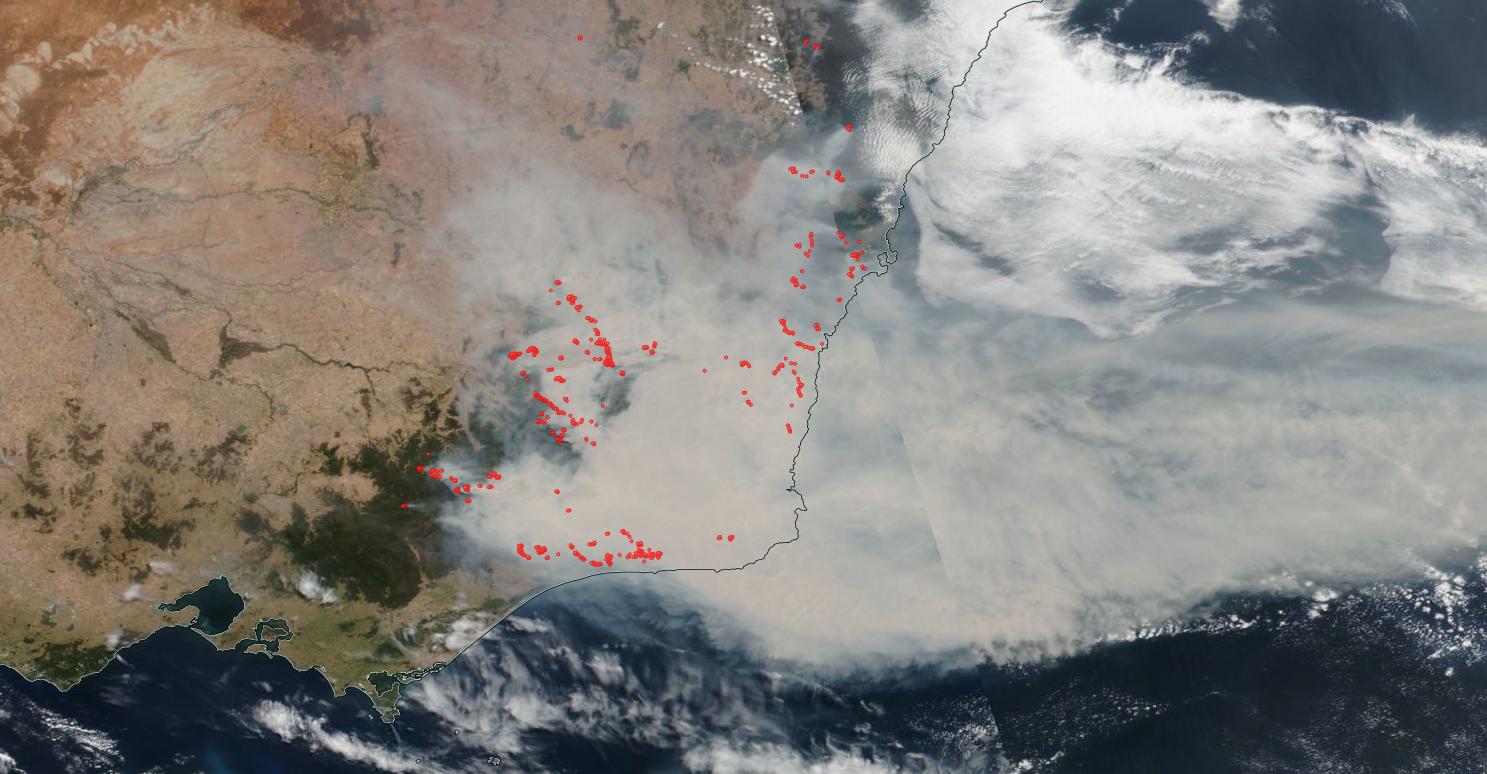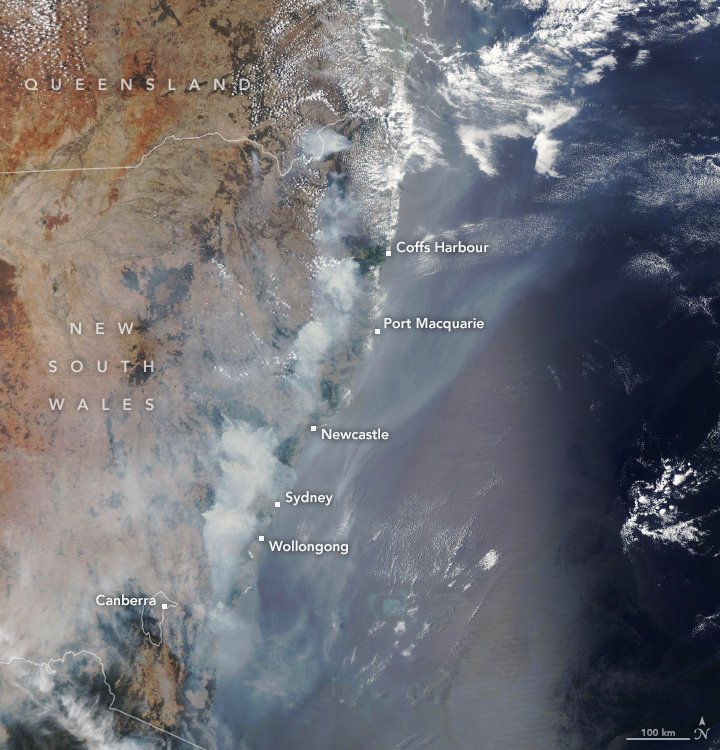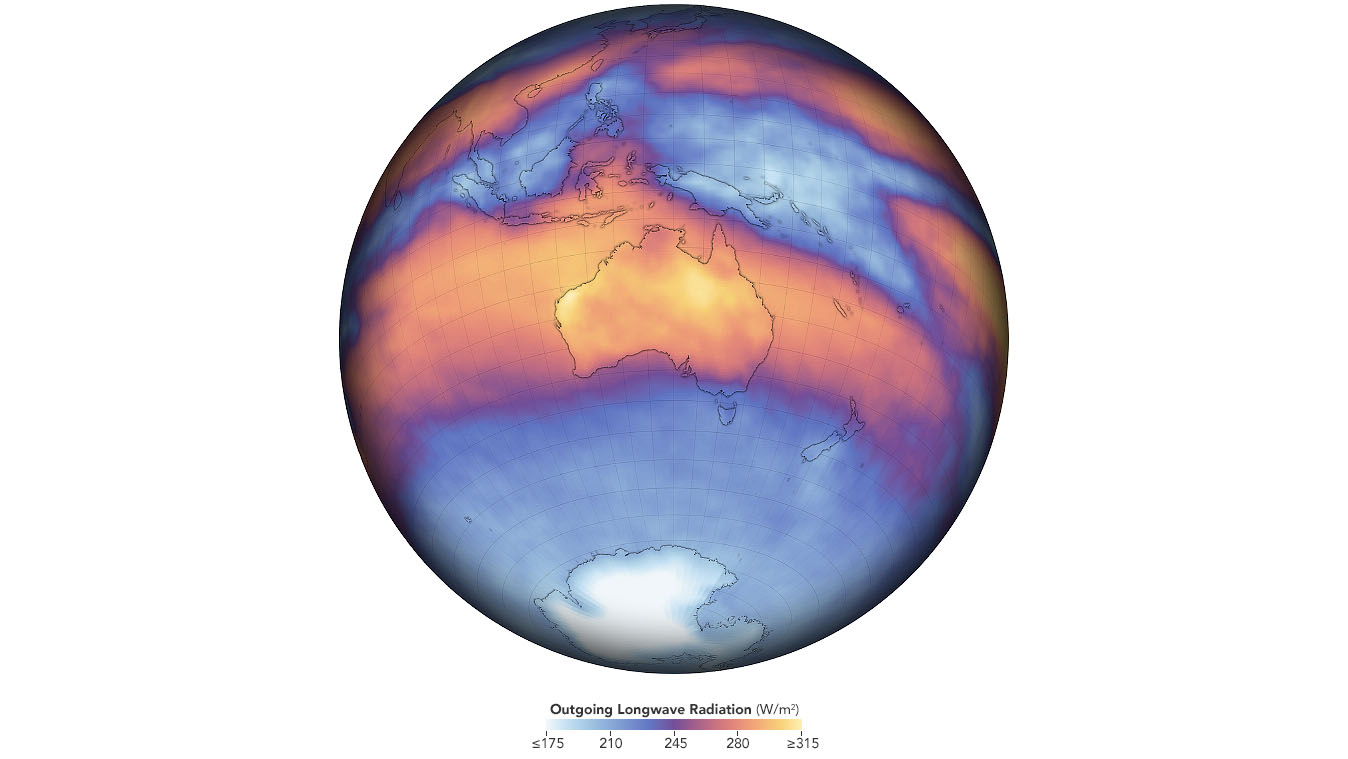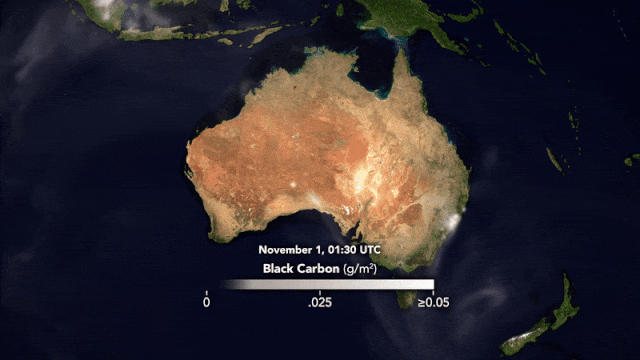Satellite Images Show Australia's Devastating Wildfires from Space
The Australian wildfires can be viewed in incredible detail via NASA's Worldview tool.

Satellites in space can spot changes to Earth's climate, and they are providing frightening bird's-eye views of the devastating consequences of global warming.
The wildfires raging in the Australian states of New South Wales and Victoria began in November 2019, and they continue to pose severe safety and environmental problems. NBC News reported that thousands of Australians fled their homes on New Year's Eve (Dec. 31), seeking refuge near the oceanside. On Thursday (Jan. 2) NBC News also reported that New South Wales declared a weeklong state of emergency, making this the third time an emergency period has been announced since the fires began.
"My last day of the decade felt like the apocalypse," Sydney-based photojournalist Matt Abbott tweeted on Dec. 31. Abbott, who is covering the wildfires for The New York Times, added: "Been covering the Australian bushfires for the last 6 weeks, but haven't seen anything like yesterday's fire that decimated the town of Conjola, NSW."
Related: Astronaut Sees Devastating California Wildfires from Space (Photos)
My last day of the decade felt like the apocalypse. Been covering the Australian bushfires for the last 6 weeks, but haven’t seen anything like yesterdays fire that decimated the town of Conjola, NSW. #bushfirecrisis #AustralianBushfires #NSWisburning work for @nytimes pic.twitter.com/KmVKqDMKsfJanuary 1, 2020
Information from NASA satellites can teach scientists about the lingering consequences of these events, like the production of dangerous gases such as carbon monoxide.
NASA operates a group of 26 satellites collectively known as the Earth Observing System (EOS), and its flagship satellite, a bus-sized spacecraft named Terra, hit its 20-year mark in space in December 2019. Other NASA satellites, like Aqua and Suomi NPP, also contribute data to EOS, a mission tasked with taking global measurements of the air, land and water to help scientists learn how those systems fit together and morph over time.
The Worldview tool from NASA's EOS Data and Information System transforms satellite data into an interactive page with over 900 imagery layers. You can view current natural disasters, like the Australian wildfires, on Worldview by date and information layer (such as thermal anomalies, borders and place labels). You can also watch an animation of activity by selecting a time range.
Get the Space.com Newsletter
Breaking space news, the latest updates on rocket launches, skywatching events and more!
A look at Australia's surface starting in October 2019 shows the astounding evolution of wildfires as they multiplied and spewed smoke across Australia's eastern shore.

A severe drought in October 2019 primed the country for the destruction that's still occurring. More than 100 fires raged over the next several months. By Dec. 12, the wildfires in Australia's New South Wales had scourged an area of about 10,000 square miles (27,000 square kilometers), according to NASA representatives in a description of satellite imagery.
The wildfires are raging on Australia's eastern coast, exposing many communities, including Sydney, to hazardous pollution levels. The Measurements of Pollution in the Troposphere instrument on the Terra satellite found that the region is blanketed by abnormally high levels of carbon monoxide, an odorless and dangerous gas that's released by the burning of plants and fossil fuels.

The fires have been particularly damaging to eucalyptus forests. The forests exist in both dry and rainy regions, and both climates are vulnerable to the wildfires for unique reasons. Eucalyptus plants that thrive in dry areas have oil-rich leaves that can easily ignite during a fire, according to a NASA description of the EOS imagery. Fires do help these plants release their seeds, but the dry season in October was so intense that it limited seed germination. Rainforest eucalyptus species, on the other hand, are not accustomed to fires. The ecosystem can't bounce back the way a dry eucalyptus forest could under milder conditions. Unable to tolerate the flames, most of these rainforest plants die under these extreme conditions.
An instrument on NASA's Tropical Rainfall Measuring Mission satellite observed the unusually hot and dry conditions of November 2019 that fueled the wildfires. The sensor, called the Clouds and the Earth's Radiant Energy System, measures the heat emitted back into space. The instrument measured how the sun's radiation was absorbed, emitted and reflected by Earth's surface during the first month of the wildfires.
The flames destroy forests and make the air unbreathable for humans, but they also harm the animals that live there. "Browsing animals like kangaroos are driven out by fire for a short time, and the heat treatment of soil reduces the number of plant-eating insects and soil organisms during the early growth period," Ayesha Tulloch, a conservation biologist at the University of Sydney, said in a NASA image description.

Join our Space Forums to keep talking space on the latest missions, night sky and more! And if you have a news tip, correction or comment, let us know at: community@space.com.

Doris is a science journalist and Space.com contributor. She received a B.A. in Sociology and Communications at Fordham University in New York City. Her first work was published in collaboration with London Mining Network, where her love of science writing was born. Her passion for astronomy started as a kid when she helped her sister build a model solar system in the Bronx. She got her first shot at astronomy writing as a Space.com editorial intern and continues to write about all things cosmic for the website. Doris has also written about microscopic plant life for Scientific American’s website and about whale calls for their print magazine. She has also written about ancient humans for Inverse, with stories ranging from how to recreate Pompeii’s cuisine to how to map the Polynesian expansion through genomics. She currently shares her home with two rabbits. Follow her on twitter at @salazar_elin.
-
mara jade Earth science is my field. God bless my 7th grade teacher. I will view satellite data with just a tad of skepticism given all the photo-doctoring happening on the web by agenda-driven people. No integrity in journalism these days. Even more so is the arrival at causation. Enough of the global warming nonsense. Australia has hot dry regions & hot humid regions. It has lots of scrub & some desert & of course a coastline in all directions. To assume that the fire was started by summer heat is incorrect application of the scientific method. The country is known to have lots of dryness. It does not possess the monsoon climate of say Bangladesh. It is being reported by several sources that there is a great deal of arson going on & this is a tool used by enviromental wacko extremists. Additionally some power lines have been brought down & once you have a spark or short circuit in a dry climate, fires are going to propagate. What I'm appalled at is the conclusion of some that this recent set of fires is due totally to the current temp of the earth or the fact that this country possesses or exports coal. That is bunk. When your electrical grid is burning coal, it releases co2. Co2 quenches fire, it does not propagate it.Reply









